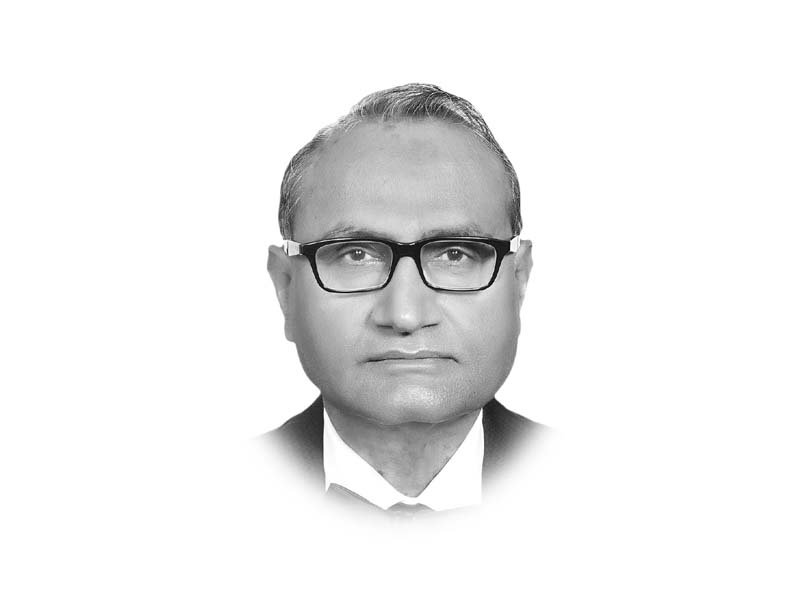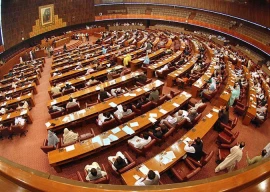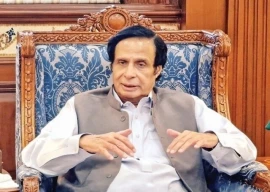
Prime Minister Imran Khan’s conciliatory speech on Wednesday was not a sudden change of policy. He had extended a hand of friendship to India in his victory speech after the elections. The position was reiterated at the Kartarpur opening. In a meeting with the Indian prime minister in 2015, he had proposed that the two countries should work together to end poverty rather than make war.
Peace is inextricably linked with investment, the strategic variable in achieving growth, development and poverty reduction. Risk and uncertainty play a major role in decisions to invest even in peacetime. During wartime, when all other conditions of doing business also change, the assessment of risk and forecasting the future present a challenge that few investors would accept. Little wonder that all except one of Pakistan’s lows in investment occurred during war years. In the outgoing fiscal year, 2017-18, the rate of investment in Pakistan was 14.8 per cent of the GDP, the public-private division being five per cent and 9.8 per cent. The target for the current is 15.6 per cent for the total and 4.8 and 10.8 per cent for the public and private investment, respectively. In 1964-65, the year before the September war, the rate of investment stood at 21.5 per cent, the peak that has never been surpassed in the following 54 years. In the war year of 1965-66, the rate of investment collapsed to 17.6 per cent. It continued to fall further, touching the bottom of 13.8 per cent in 1968-69. After recovering slightly in the following two years, the Bangladesh crisis started, leading to war with India in 1971. By 1972-73, the rate of investment had regressed to the lowest level of 11.4 per cent attained in 1959-60. Next trough in the rate of investment was witnessed at the time of Kargil the conflict that brought it down to 13.9 per cent. Finally, the only non-war trough in the investment rate was brought about by the worst-ever floods in 2010-11; it stood at 12.5 per cent.

India, a much larger economy than Pakistan, had a mixed experience, but from a lower base. In 1964-65, the investment rate in India was 16.6 per cent, far below than Pakistan’s 21.5 per cent. The war in September pushed it down to 16.1 per cent. It kept on falling till 1969-70, when it hit the bottom of 14.7 per cent. It recovered to 16.3 per cent in the following two years. The impact of the war with Pakistan was felt in in 1972-73, as the investment rate came down to 15.3 per cent. In 1977-78, India overtook Pakistan and never looked back. The rate of investment at 18.6 per cent of the GDP exceeded Pakistan’s rate of investment at 17.3 per cent. It went up to 25.9 per cent in 1998-99. During the Kargil conflict in the following year, the investment rate declined to 24.6 per cent. India achieved her peak in 2006-07, with the rate of investment reaching 35.6 per cent of the GDP. However, it has been on the downhill ever since. The latest available information is for 2016-17, which records it at 28.5 per cent. This setback of 7.1 percentage of GDP is no less a factor in the current war hysteria.
As for poverty, India is way behind Pakistan, despite higher investment, indicating the less inclusive nature of growth. In 2011, $1.90 a day poverty was 21.2 per cent in India and 7.9 per cent in Pakistan. It has declined since, but the multidimensional poverty is much higher in both countries. The people expect statesmanship, not the current brinkmanship, to move out their historical haplessness.
Published in The Express Tribune, March 1st, 2019.
Like Opinion & Editorial on Facebook, follow @ETOpEd on Twitter to receive all updates on all our daily pieces.






























































COMMENTS
Comments are moderated and generally will be posted if they are on-topic and not abusive.
For more information, please see our Comments FAQ